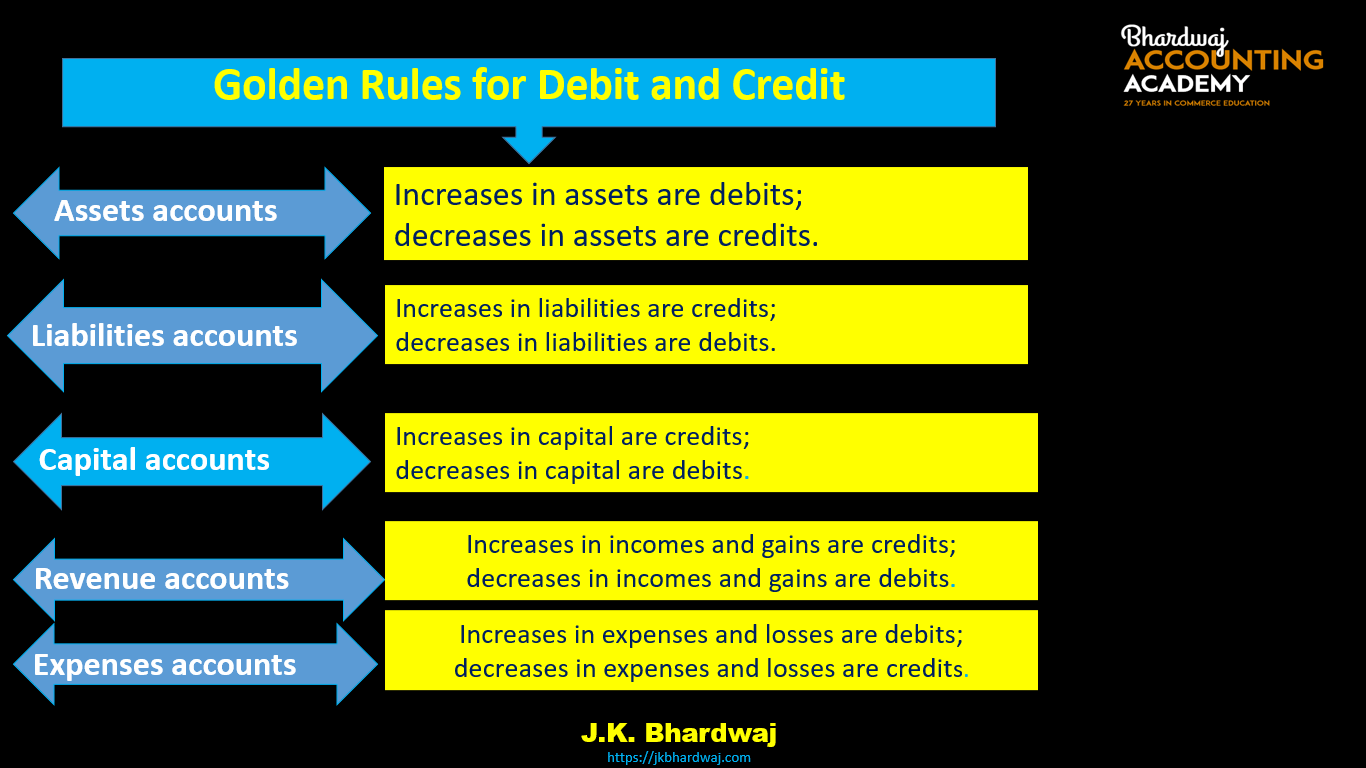Table of Contents
Types of Accounts Modern Approach:
Account – Account is the individual record of an asset, a liability, a revenue, an expense or capital, in a summarized manner.
For example, the individual sales record is a ‘sales account’. In the same way, so many accounts are opened in the ledger like salary account, machinery account, furniture account, Capital account, Purchases account etc. According to the Modern approach of accounting, there are five Types of accounts:
1. Assets Accounts
2. Liabilities Accounts
3. Capital Accounts Or Equity Accounts or Owner’s Equity Accounts
4. Revenue Accounts
5. Expenses Accounts
Types of Accounts Modern Approach
1. Assets Accounts-
Those accounts related to Assets and properties of a business are called assets accounts. These accounts represent the valuable resources a business owns and controls, with the expectation of future benefits. They typically have a debit balance. Such as:
Building account,
Land account,
Plant& Machinery account,
Cash account,
Furniture account,
Computer account,
Investment account,
Motor vehicles account,
Fixture and fitting account,
Plant account,
Stock account(Inventory)
Debtors account
Bank Account
Goodwill Account
Bills Receivables Account
Trade Mark Account etc.
Types of Accounts Modern Approach
2. Liabilities Accounts-
Those accounts related to the Liabilities of a business are called Liabilities accounts. These accounts represent the financial obligations a business owes to outsiders.
Such as:
Creditors Account,
Bills payable Account,
Bank loan Account,
Outstanding Expenses Account,
Bank overdraft Account
Income Received In Advance Account
Trade Payables etc.
Types of Accounts Modern Approach
3. Capital Accounts Or Equity Accounts (or Owner’s Equity Accounts):-
Capital Accounts refer to the accounts of the proprietors/ partners who have invested money in the business. (Represent Owner/Proprietors or partners). These accounts represent the owner’s investment in the business and its retained earnings. They reflect the net worth of the business. Equity accounts typically have a credit balance.
Capital means the amount or asset that is invested in the business by a businessman or owner of the business enterprise.
Types of Accounts Modern Approach
4. Revenue Accounts-
Those accounts related to Income and gains of a business are called revenue accounts. These accounts record the income generated by the business from selling goods or services. They are temporary accounts closed at the end of the accounting period and their balances are transferred to the equity section.
Such as:
Sales Account,
Sales Return Account (Contra revenue account)
Commission received Account,
Discount received Account,
Rent received Account,
dividend received Account etc.
Revenue means the amount receivable or realized from the sale of goods and earnings from interest, dividends, commission, etc.
Types of Accounts Modern Approach
5. Expenses Accounts-
Those accounts related to the expenses of a business are called expense accounts. These accounts record the costs incurred by the business in operating. They are also temporary accounts closed at the end of the accounting period and their balances transferred to the equity section.
Such as:
purchase Account,
purchase Return Account
Commission account,
Discount account,
Rent account,
Repairs account,
General expenses account,
Office expenses account
Interest account
Depreciation account
Bad debts account
Salaries account
Wages account
Charity account
Advertisement Expenses account
General Expenses Account
Office Expenses Account
Manufacturing expenses Account etc.
Costs incurred by a business in the process of earning revenue are called expenses.
Examples of expenses are Purchase of Goods, Office Expenses, Carriage, Commission to agent, Depreciation, Rent, Wages, Salaries, Interest, Carriage, Manufacturing expenses, Light and water and Telephone, Postage, Administration, Advertisement expenses, etc.
Types of Accounts Modern Approach
Also Read: List of current assets and current liabilities
Also Read: Tangible vs Intangible Assets
Also Read: Liquid Ratio Or Quick Ratio Or Acid Test Ratio
Also Read: Real Account Examples List
Types of Accounts Modern Approach
Golden Rules of Debit and Credit in the American Approach-
Golden Rules Of Accounting-

